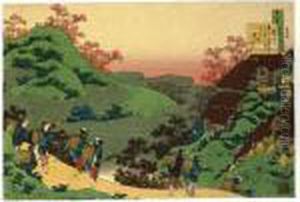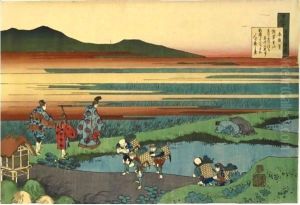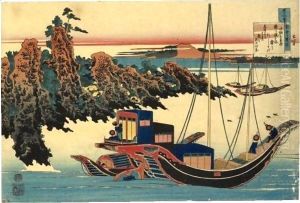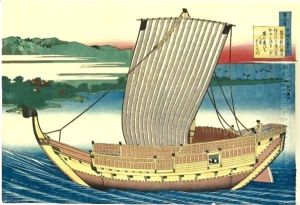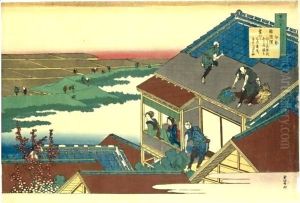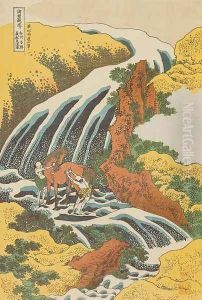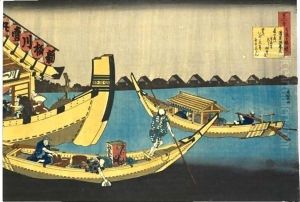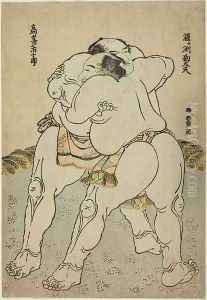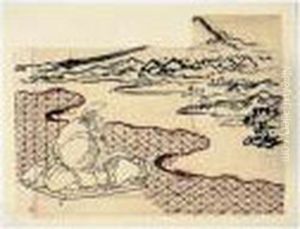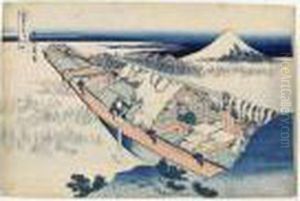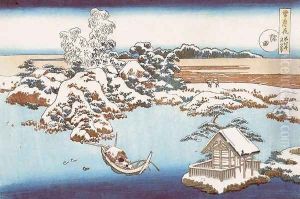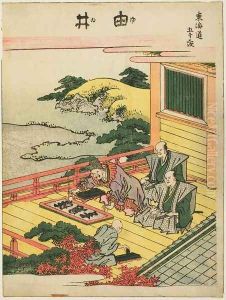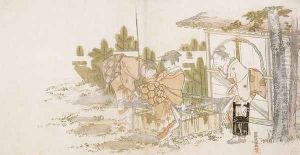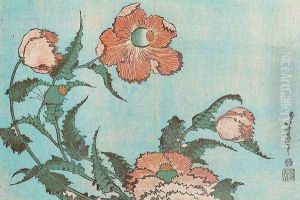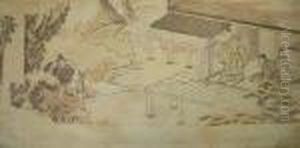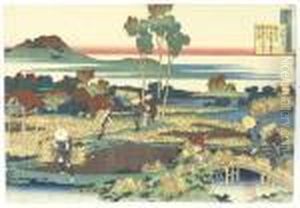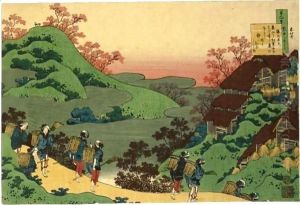





Sarumaru Dayu From The 'Hyakunin Isshu Ubaga Etoki'
-
About Reproduction
Discover the allure of art with our faithful reproduction of "Sarumaru Dayu From The 'Hyakunin Isshu Ubaga Etoki'", originally brought to life by the talented Katsushika Hokusai. Unlike posters or prints, our hand-painted oil painting breathes an unique sense of depth and texture into your space. Every detail, every stroke, and every texture is meticulously recreated, paying the perfect homage to Katsushika Hokusai and his artistic vision.
Owning this piece is more than just decoration - it's a statement of your refined taste in art. Let the vibrant colors and intricate details of this replica serve as a daily reminder of the beauty in our world. Elevate your decor and appreciate the richness of art with our replica of this masterpiece.
-
Painting Description
"Sarumaru Dayū from the 'Hyakunin Isshu Ubaga Etoki'" is a woodblock print by the renowned Japanese ukiyo-e artist Katsushika Hokusai. This print is part of a series illustrating the "Hyakunin Isshu," a classical anthology of one hundred Japanese poems by one hundred poets, compiled by Fujiwara no Teika in the 13th century. The term "Ubaga Etoki" translates to "Old Woman's Interpretation" or "Picture Commentary by an Old Nurse," suggesting that the series presents these poems with explanatory scenes, possibly as if narrated by an elderly woman.
In this particular print, Hokusai depicts Sarumaru Dayū, a legendary figure often included in the Hyakunin Isshu, though historical details about him are scarce. He is traditionally considered a courtier and poet from the early Heian period and is sometimes associated with the semi-legendary figure Sarumaru no Taifu. The poem attributed to Sarumaru Dayū in the Hyakunin Isshu is a waka, a type of classical Japanese poem, which expresses the poet's melancholy through the imagery of autumn leaves and the calls of deer.
Hokusai's portrayal of Sarumaru Dayū is consistent with his style, characterized by bold lines, attention to detail, and a keen sense of composition. The print is likely to reflect the aesthetics and cultural values of the Edo period (1603–1868), during which Hokusai lived and worked. As with many of Hokusai's works, this print would have been produced through a collaborative process involving a publisher, a designer (Hokusai himself), carvers, and printers.
The "Hyakunin Isshu Ubaga Etoki" series is significant as it represents Hokusai's engagement with classical Japanese literature and his interpretation of the evocative imagery found within the poems. It also exemplifies the ukiyo-e genre's capacity to bridge the literary and visual arts, making the sophisticated and allusive world of classical poetry accessible to a broader audience.
This print, along with the rest of the series, contributes to our understanding of how literature and art intersected in Edo-period Japan and offers insight into Hokusai's artistic range beyond his more famous landscapes and seascapes. As a piece of the "Hyakunin Isshu Ubaga Etoki," Sarumaru Dayū's depiction by Hokusai remains an important work for both its artistic merit and its cultural significance in the context of Japanese art history.
-
Lead Time & Shipping
When you order this oil painting replica, it typically takes 2-3 weeks to paint. If the artwork is more complex, it might need a little more time to ensure the best quality. Once it's ready, we'll send you a photo for your approval. After you give the green light, we'll ship it to you for free.
-
Return & Refund
We believe in the quality of our hand-painted oil painting reproductions, and your satisfaction is our priority. If for any reason, you are not completely satisfied with your purchase, we offer a 45-day return policy. You can return your artwork within 45 days of receipt and receive a full refund. Please note that the artwork must be returned in the original packaging and in the same condition as it was received.





